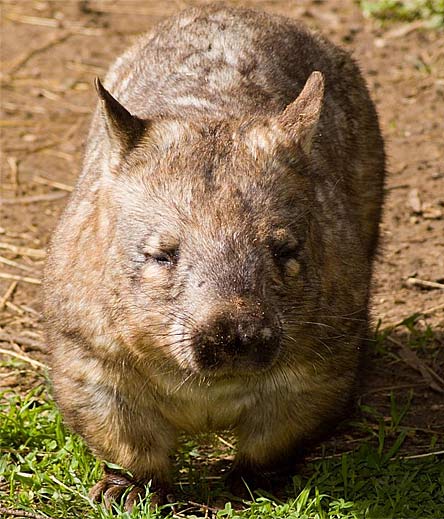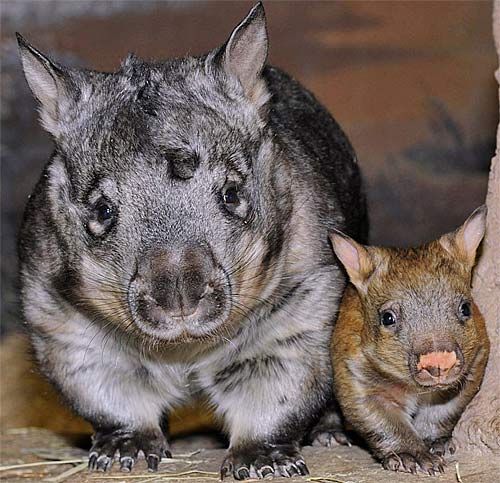Northern Hairy-Nosed Wombat

A critically endangered species, the Northern hairy-nosed wombat is one of the most rare large mammals in the world, and is one of only three types of wombat that exist period. Historically, the species has had a range that extends all across Australia, but in recent years it has found itself confined to Epping Forest National Park in Queensland, with only around 115 individuals making up its the population of the entire species. Standing about a foot tall (35 cm), with a length of around three feet (1 meter) and a body weight of eighty-eight pounds (40 kilograms), the northern hairy-nosed wombat looks an awful lot like its relative, the Southern hairy-nosed wombat; it’s just slightly larger and there’s far less of them (the southern species isn’t endangered at all). Northern hairy-noses like to live in burrows and are nocturnal; like many burrowing and nocturnal creatures they’ve evolved to have poor eyesight, so they rely on their sense of smell for all aspects of survival.These wombats aren’t hunters, and are known to live off of coarse grass and various types of roots.


Like other marsupials, the Northern hairy-nose is born externally and then crawls into its mother’s pouch, where it lives for nine months before spending an additional three getting used to the outside world. At around a year old, they leave their mothers, but often seek companionship in other members of the species, as they’ve been known to share burrows. Due to its near extinction, the Northern hairy-nosed is the subject of various conservation efforts, including the building of predator-proof fences around its main habitat. Although their birthing process is singular and slow, and even though they lack a large number of breeding females, this wombat species continues to fight for its survival, and hopefully will someday find itself with a thriving population once again.


